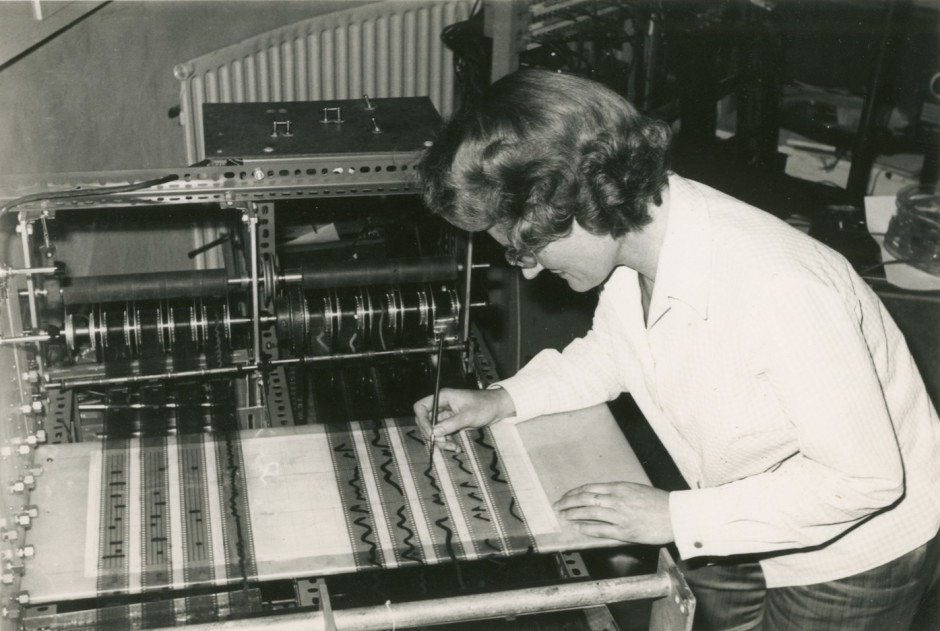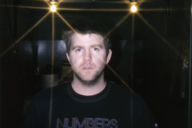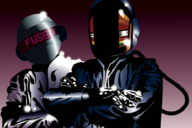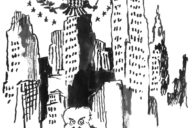At Fused we love a bit of vintage electronica, so when we heard that there were plans afoot to republish the late British electronic music pioneer Daphne Oram’s 1972 book ‘An Individual Note of Music, Sound and Electronics’, we were naturally curious to find out more. When we discovered that longstanding Fused contributor and collaborator Matt Price was involved in the project, we thought we’d drop him a line to ask him all about it.
Fused: For anyone who might not have heard of her, in a nutshell, who is Daphne Oram?
MP: Daphne Oram, who died in 2003, was at the vanguard of developments in electronic music and sound technology in Britain during much of the twentieth century. She is perhaps best known because she co-founded, and was the first Director of, the BBC’s Radiophonic Workshop – the visionary department within the BBC that was established in the late 1950s to create music and soundtracks to radio and television programmes with sounds and compositions that their in-house orchestras alone could not create. A lot of it was pretty far out – it sounded like it was from the future or from another world – and has become kind of cult in certain circles. Not to be confused with another brilliant engineer and composer from the Radiophonic Workshop – Delia Derbyshire – Daphne Oram left the BBC in 1959 and set up her own studio in a former oast house in Kent called Tower Folly – a suitably quirky abode for such unusual sounds and such a remarkable woman. She was pretty much freelance for most of her career, being hired to make music and sounds for television adverts, theatre, film and so on, and she did a lot of teaching too, but she had a special project that has recently come into the spotlight: she invented one of the world’s first synthesisers. Pretty much on her own, putting every penny she had into developing it, she came up with a machine that was designed to generate and control any sound – a dream she’d had since she was a girl.
Fused: Did her machine become a commercial success?
MP: No, sadly, it didn’t – she didn’t really have enough funding for a project of that complexity, and when the computer arrived on the scene she realised that her own machine – the Oramics Machine – had been overtaken. While it’s a shame it didn’t directly become a mass-produced synth like the Moog, her achievements were remarkable nonetheless – she had almost single-handedly developed a machine in the late 1950s and early 1960s that did actually work as it was intended to. And it was a very beautifully conceived machine that worked using drawn waveforms on film. In this it was not unlike the Variophone, a machine invented by Evgeny Sholpo in Russia in 1930, and the drawn waveforms of Arseny Avraamov, but the level of control she brought to her invention was extraordinary. So Oram was a key part of an international lineage of pioneering technology in the field of sound synthesis. Oram’s original machine – a working prototype in effect – was recovered just a few years ago from a barn in France by Dr. Mick Grierson from the department of computing at Goldsmiths in London. The machine is now being properly conserved, and a functioning replica has been created – there was recently an exhibition about it at the Science Museum in London. They even developed an app of the Oramics Machine, which you can purchase and download from the App Store.
Fused: What is her book about?
MP: ‘An Individual Note of Music, Sound and Electronics’ was Oram’s first and only book, which she wrote in 1971-72. When she was invited by the publisher, she was keen to avoid writing a text book – she specifically didn’t want it to be a manual or a how-to guide. Rather she wanted to use the opportunity to muse on the subjects of music, sound and electronics and the relationships between them. Some of the book is written for the layman, so everyone can understand some parts, but other parts are definitely more for specialists such as musicians, composers, sound engineers, musicologists and so on. I confess she loses me in places! But I guess it would have been a much smaller, more specialist readership when the book was first published, and as the idea of electronic music was relatively new to the general public at the time, this was one of the first books to attempt to explain some of the principles of making electronic sounds and how they relate to our experiences and appreciation of music. The book is written in quite a playful and entertaining way – she’s clearly enjoying explaining all this amazing stuff to us – and beyond the nuts and bolts of transistors and waveforms, she takes us into some really interesting areas of thinking, some of which is quite abstract and was undoubtedly well ahead of its time – maybe it still is. Some people have described the book as almost ‘philosophical’ and it’s probably not a bad word to use as she was definitely thinking through some of the implications of the new technology well beyond its technical functionality.
Fused: That leads us on to the next question, which is why is the book being republished now?
MP: I think we’re at that point in time when we’re far enough on to be able to look back on her work with some sense of historical perspective, and because there is an ever-growing interest in the development of electronic music in the twentieth century it is a good moment to look again at what she was doing to see where she fits in this story. I remember reading an article about her in The Guardian some years back, by Robert Worby, who asserted ‘however hard you look into the history of electronic music, there is one name you’ll struggle to find – that of Daphne Oram’. And there is very much a sense that Oram’s life and work has been overlooked in certain quarters, sidelined or marginalised. Perhaps it was partly because she was a woman working in a pretty patriarchal system; perhaps it was because she was so unique that she never really fitted into the ‘institution’. But there’s also a real resurgence of interest in her work and a drive to ensure that her name is not forgotten, that her work becomes a much better acknowledged part of the history of electronic music both in Britain and on an international stage.
Fused: How did the idea of republishing the book get off the ground?
MP: When Daphne Oram died in 2003 her books, papers, notes, recordings and equipment were passed to her friend Hugh Davies (Oram never married or had children), and following his death just two years later, everything was taken on by Goldsmiths to create a new archive of Oram’s life and work. The aforementioned Dr. Mick Grierson – a really dynamic and inspiring man – was instrumental in this, and following a successful application for funding from the Arts and Humanities Research Council, cataloguing and digitising of the collection was able to begin in 2007. Alongside the Daphne Oram Archive, a trust was set up in 2009 to celebrate Oram’s work and to promote it in the academic and public spheres. The Daphne Oram Trust is run on a voluntary basis by a small but highly dedicated and impressive team of people, and the idea of republishing ‘An Individual Note’ has been high on the list of things they felt should be done for Oram’s legacy. The book has been out of print for many years and copies are very hard to come by, so they decided to make a new edition and to publish it internationally so that it re-enters discourse and practice, libraries, bookshops and people’s bookshelves. I’m working with the Trust to produce and publish the new edition and to get it distributed as far and wide as possible. As the Trust has limited funds, they needed to raise some more cash to be able to make the project happen.
Fused: How did they do go about doing that?
MP: They decided to try a Kickstarter campaign, and appointed Adapt for Arts to run it – a fantastic not-for-profit Community Interest Company based in Manchester. We’ve been working with them on the campaign over the past few months, and the campaign went live ten days ago. A company called Leap has made us a brilliant promotional film, which has had more than 20,000 views in a week! The target is to raise at least £10,000 to be able to fund the new edition of the book, and the campaign has been going really well so far. We’re not quite there yet, though, so please do make a pledge to help the campaign if you can (that’s all the lovely Fused readers, not just you, Kerry!) We’re hoping to be able to make the book a hardback one if we raise enough funds. The new edition is being designed by the exceptional Joe Gilmore from the Yorkshire-based design agency Qubik – the design and layouts are looking really beautiful, and we can’t wait to get the book to print in the autumn. The plan is to launch the book in November at Waterstones Piccadilly, and to release the book to the international book trade in early December. Wish us luck!
Fused: Of course we wish you luck with that! Now did we read on Twitter that someone special has been invited to write a new introduction to the new edition of the book?
MP: Yes! That’s right! The Daphne Oram Trust has invited the incredible British composer, performer, roboticist and sound historian Sarah Angliss to write the new introduction. The Trust wanted to invite Angliss because she has such an incredible breadth of knowledge and experience in the field of electronic music, and from both sides of the stage – as a composer, engineer and performing artist as well as a writer and researcher. She is currently a visiting research fellow at Goldsmiths and has been spending some time with the Daphne Oram Archive at the university as part of her research for the introduction. In fact, it was Angliss’s love of the BBC’s Radiophonic Workshop as a child in the 1970s that inspired her to study electroacoustics for her first degree, which was followed by a masters in robotics. Her subsequent career has been as inspiring as it has been eclectic, whether performing on stage with instruments and automata she has created, working with sound design for theatre, film and exhibitions, or researching into subjects as diverse as the history of musical inventions, the use of trained birds as ‘sound recorders’, ventriloquism, private nuclear shelters, and the 1930s Electrical Association for Women. Angliss is a remarkable person and her understanding of the development of electronic music and technology during the twentieth century and beyond made her the perfect person for the Trust to have invited to contribute to this new edition of ‘An Individual Note’. I’m really looking forward to reading it!
Daphne Oram’s ‘An Individual Note’ will be published by The Daphne Oram Trust in partnership with Anomie Publishing in December 2016.
GIVEAWAY
Fused Magazine is giving away three copies of Daphne Oram’s ‘An Individual Note’ courtesy of the Daphne Oram Trust and Anomie Publishing. For a chance to win one of these copies, just like and share this article on social media using the hashtags #DaphneOram #AnIndividualNote. Winners will be selected randomly and announced on 14 July 2016, and will receive a copy soon after the release date in December.
You can support the Kickstarter campaign for Oram’s book, for which there are loads of great supporter incentives, as well as an opportunity to pre-order your copy.
Image credit: Daphne Oram drawing timbres on the Oramics machine © Daphne Oram Trust and Fred Wood. Courtesy of Goldsmiths Special Collections & Archives.







